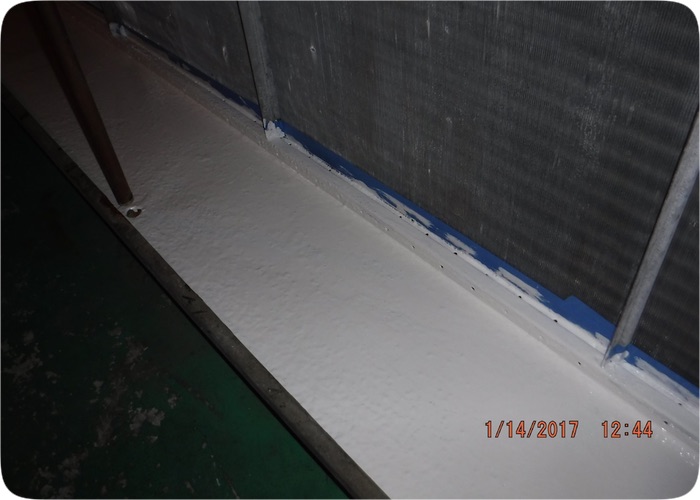
More Articles
How do you handle a rusty, corroded condensate pan?
We asked ourselves that question some time ago and have been looking into it since.
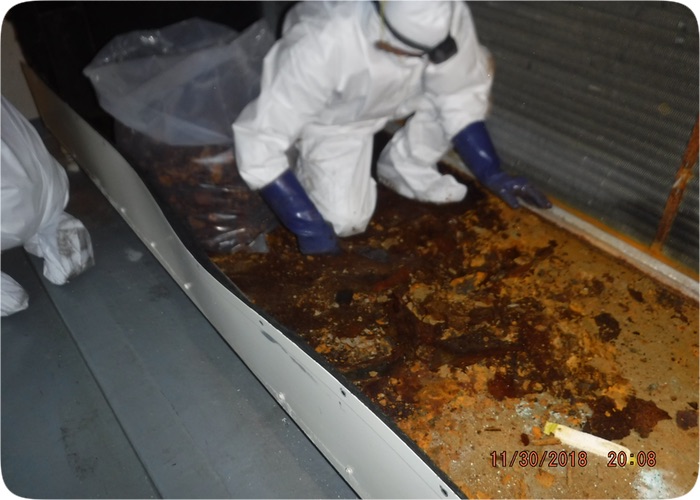
You'd be surprised how much condensate water is generated by a large set of cooling coils in a commercial HVAC system - it is usually a torrent, not a trickle. And that torrent needs to be properly controlled by the condensate pan and drainage system otherwise major problems are guaranteed to follow: water leaking down into tenant spaces, mold, rusted out air handler components.
The most effective method of preventing the onset of corrosion in a condensate pan is keep it clean! Drain the water, remove all microbial growth, ensure it drains properly, address any minor corrosion present. If this discipline begins when the pan is newly installed, and cleaning is done on a regular basis, a galvanized metal pan will last indefinitely.
But once rust has a foothold, it does not give up easily. What to do when you discover the condensate pan is showing signs of corrosion? What if it's gone far enough that the pan has rusted through or is splitting at the seams? What if it is a lost cause?
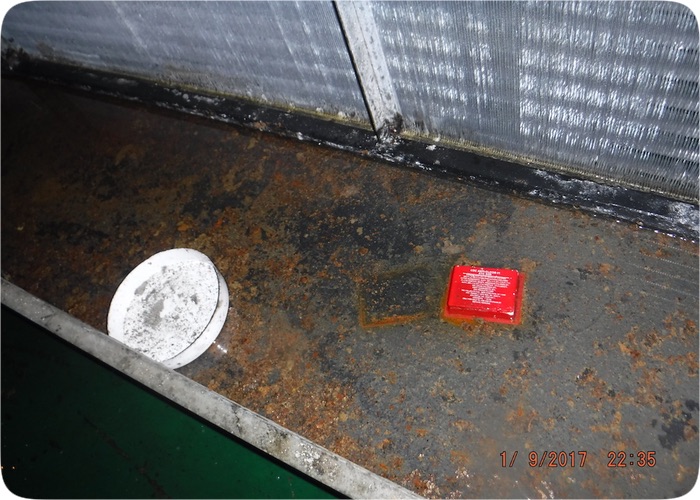
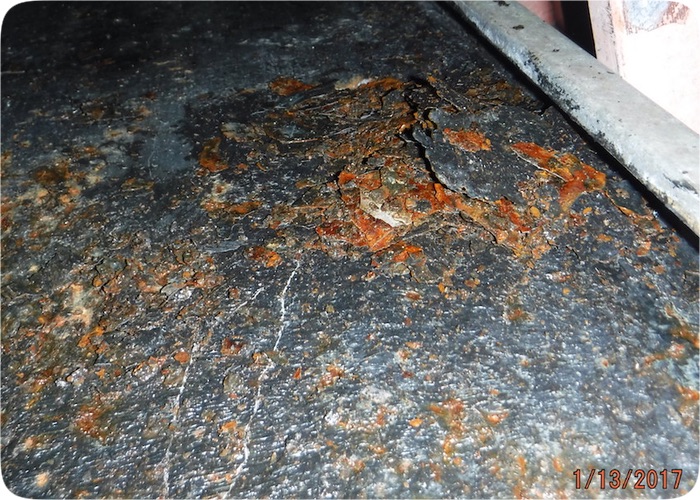
When it reaches the final stages, you can no longer consider the pan a pan, but a collection of loosely held together rust particles. The only option, despite the prohibitive cost, is to replace the pan or the whole air handler. No amount of paint, patching or sealant will result in any improvement.
There is a whole gradient of degradation of condensate pans and the approach to handling depends on what stage the degradation has reached.
- The pan is new. Regularly empty the pan, keep it cleaned, free of scum. Ensure the drain pipe is open and free. As noted, these action alone will extend the life of a galvanized pan by years or even decades.
What about microbial pads, algae treatment, anti-scum tablets? They do work to reduce algae growth, but do nothing about rust and if not otherwise maintained, they simply become a problem themselves. So it comes back to cleaning the pans regularly.
- The pan is showing some slight evidence of surface rust. Clean the whole pan and possibly treat the rusty areas with a rust “neutralizing” type product such as Standard Chemical Defender II, a product that bonds with the rust and metal arresting further corrosion.
- The rust is heavy with some flaking resulting in thin spots in the metal, possibly some pinholes in the metal. All the metal needs to be thoroughly cleaned, all loose rust removed, the surfaces wire-brushed and all pinholes located and sealed.
Then the whole pan should be surface sealed using any number of products designed for this purpose.
- When the pan has reached such a point that there are gaping holes, cracks and obvious structural damage, the steps in number 3 above can be taken, but with uncertain results. Unfortunately, when it does reach the stage, it is likely that replacement is the only option.
We have done all of the above steps - regular cleaning of the pan to prolong its serviceable life, to fully rehabilitating the pan, and in doing so, we have tested and used a whole gamut of coatings and sealants.
We’ve used high VOC epoxy coatings, rust prohibitive paints, coatings designed to protect pilings, specialized epoxies for just this purpose, polymer epoxy products designed for bartops, foam-type coatings. All had their advantages and drawbacks.
We've finally settled on a product called "V-570", an epoxy manufactured by Controlled Release Technologies. It is actually the undercoat or primer to Pancrete, which is considered to be the king of the hill when it comes to pan coatings. But Pancrete, being a self-leveling material, will tend to cancel out the designed slope of a condensate pan that allows the water to drain away. This results in standing water in the pan, which can lead to many of the problems discussed above.
V-570 itself is a thick, sturdy coating that will seal pinholes, it will adhere to vertical surfaces, it is highly glossy and provides a steel hard surface on the existing pan. Results have shown it is a viable solution to repairing and sealing a compromised condensate pan extending its life.
Machado has explored a number of options and products, each of which has its advantages and drawbacks. The advantages include effectiveness and durability, ease of application, low cost. The drawbacks include low effectiveness and durability, difficult, labor intensive application and high cost. It’s been a real learning curve.
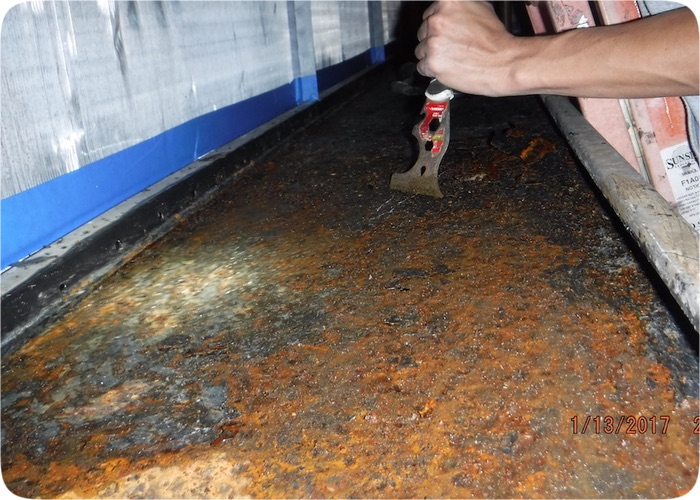
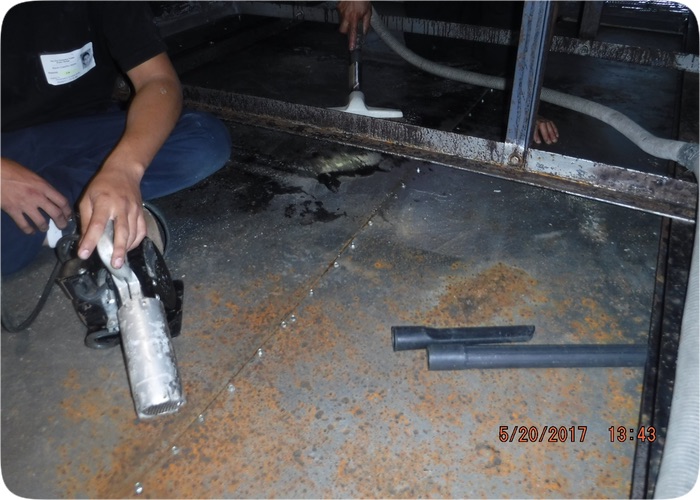
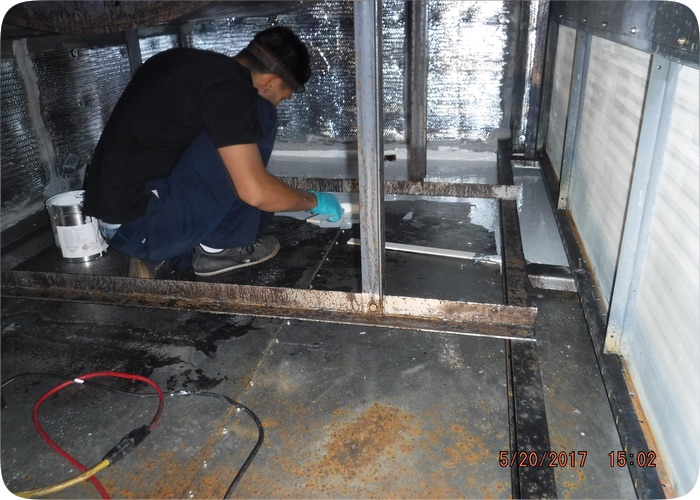
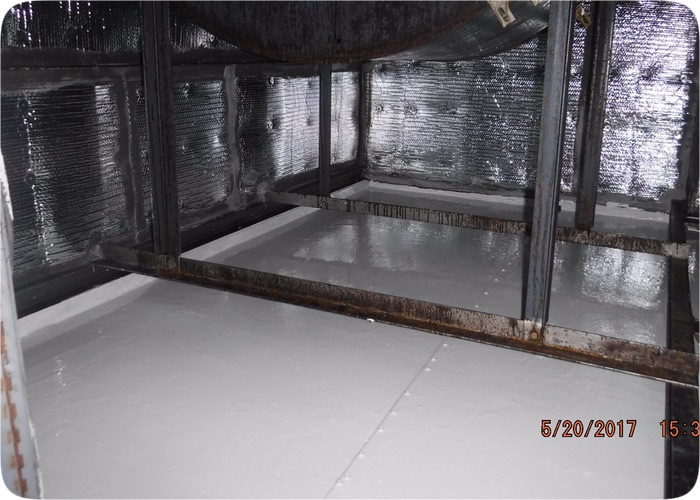
The bottom line is that the best time to ensure the pan stays clean and healthy is when it is new. But if things have gone beyond that point, you know who to call!
